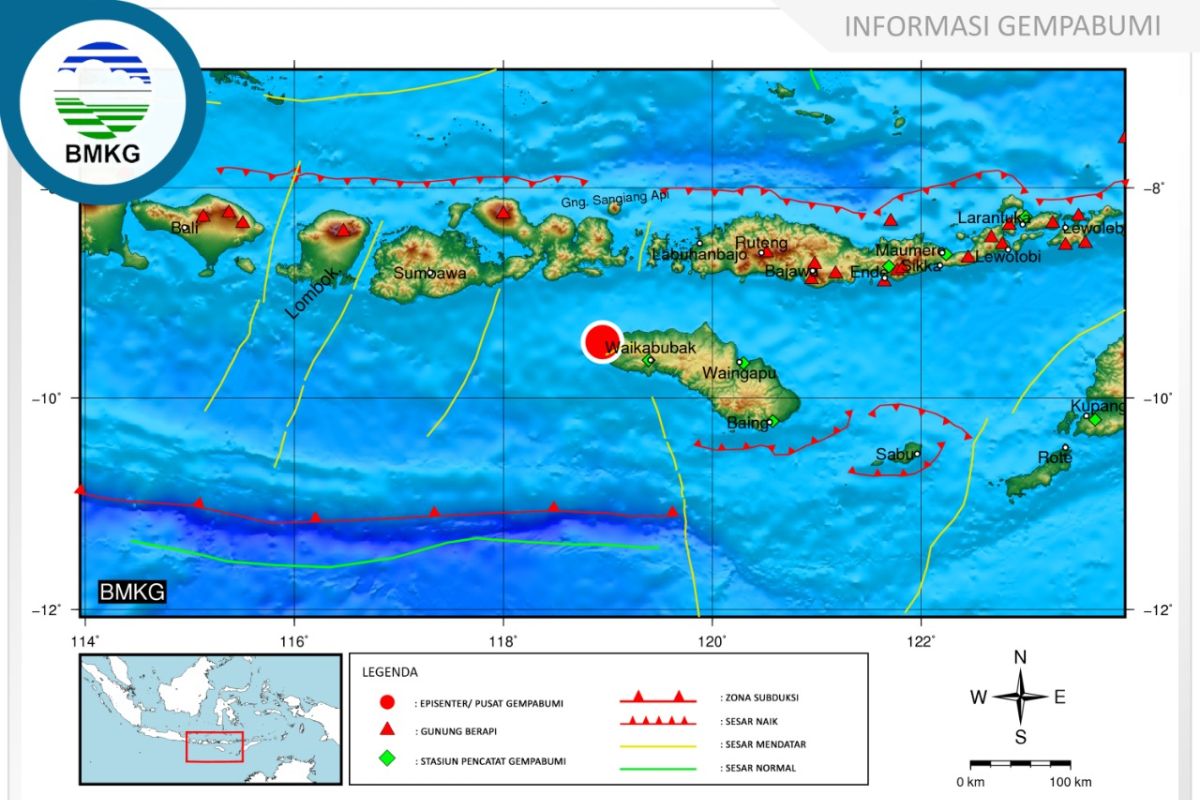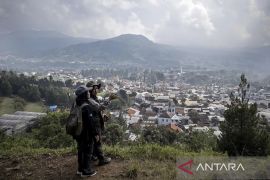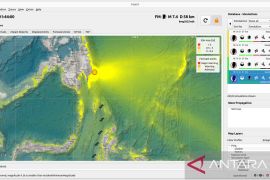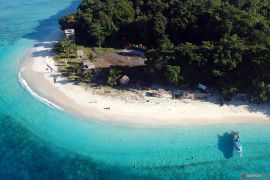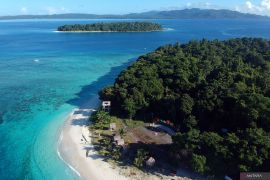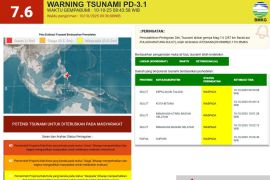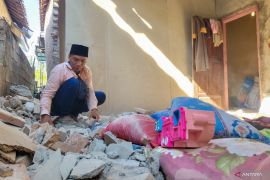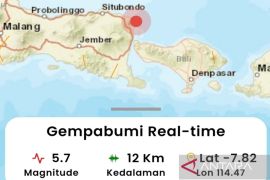The Meteorology, Climatology, and Geophysics Agency (BMKG) confirmed the receipt of immediate reports of casualties and damages in the aftermath of the earthquake that was noted as the first occurrence in the area on the first day of 2021.
The tremors of the earthquake, whose epicenter was located some 21 kilometers (km) away from northwest of Tambolaka, the capital of Sumba Barat Daya District, at a depth of 83 km, triggered fear and panic among several residents, who fled their houses.
The BMKG confirmed that the tremors could also be felt by those in several other areas in East Nusa Tenggara and its neighboring province, West Nusa Tenggara, including Waingapu, Waikabubak, and Bima.
As of 7 a.m. local time, no aftershocks were reported following the first earthquake, but those in Sumba Island were advised to remain alert, as the BMKG frequently recorded significant seismic activity in the area.
The agency stated that a 6.0-magnitude earthquake that jolted the Sumba Timur District’s areas on October 1, 2018, caused damage to several houses and wounded numerous people.
Another earthquake of magnitude measuring 6.3 again struck the district's area on October 2, 2018, causing damage to several other houses.
Earthquakes regularly rock various parts of Indonesia since the country lies on the Circum-Pacific Belt, also known as the Ring of Fire, where several tectonic plates meet and cause frequent volcanic and seismic activities.
One of the deadliest earthquakes to have hit eastern Indonesia occurred in several areas of Central Sulawesi Province on September 28, 2018.
The 7.4-magnitude earthquake followed by a tsunami that hit the areas of Palu City and the districts of Donggala, Paringi Moutong, and Sigi on Sept 28, 2018, claimed 2,102 lives, injured 4,612, and rendered 680 others missing.
A total of 68,451 homes were seriously damaged, while 78,994 people were displaced.
The authorities and humanitarian workers decided to bury the large number of rotting corpses in mass graves.
Meanwhile, material losses inflicted by the twin deadly disasters were estimated to reach Rp15.29 trillion.
The provincial capital of Palu bore the brunt of the disaster, with material damage and losses recorded at Rp7.6 trillion, or 50 percent of the total estimate, according to the National Disaster Mitigation Agency (BNPB).
The material damage and losses in Sigi District were recorded at Rp4.9 trillion, or 32.1 percent; Donggala District, at Rp2.1 trillion, or 13.8 percent; and Parigi Moutong District, at Rp631 billion, or 4.1 percent.
The material damage in the four affected areas reached an estimated Rp13.27 trillion, while the material losses were reportedly around Rp2.02 trillion, the agency revealed in October 2018.
Related news: Year ender --- Drug offenders remain Indonesia's number one enemies
Related news: Year ender - Indonesia stands firmly behind Blue Helmets Close
EDITED BY INE
Translator: Katriana, Rahmad Nasution
Editor: Fardah Assegaf
Copyright © ANTARA 2021
